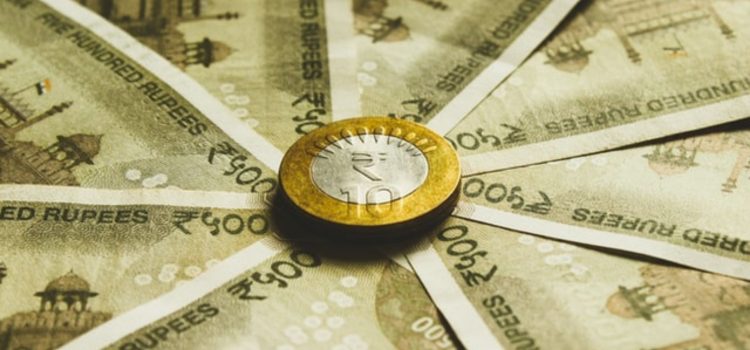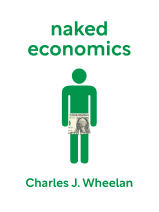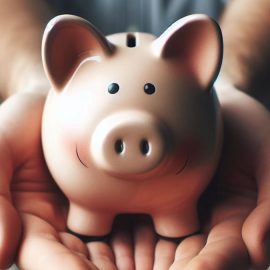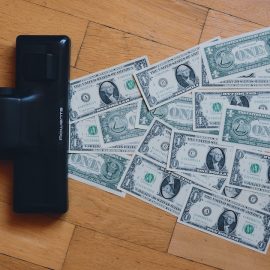

This article is an excerpt from the Shortform book guide to "Naked Economics" by Charles J. Wheelan. Shortform has the world's best summaries and analyses of books you should be reading.
Like this article? Sign up for a free trial here .
What exactly is a market? How does an economic market regulate itself given there’s no central authority overseeing its inner workings?
A market is essentially a collection of billions of separate transactions that form a complex economy in which people can earn and spend money to fund their lives. A capitalist market functions cohesively, not because a centralized authority tells it what to do, but because each transaction works together efficiently. The paradox of the market is that while individuals use the market to increase their own individual well-being, in the process, they increase everyone else’s well-being also.
In this article, we’ll explore three basic ideas underpinning capitalist markets: 1) the market allocates resources, 2) the market improves society, and 3) individual incentives drive the market.
1. The Market Allocates Resources
A capitalist market is essentially a way to allocate resources. Because there’s a finite supply of anything that’s worth having—almond butter, clean water, spin classes, computer repair-people—we are faced with a basic problem of how to determine fairly who gets what, how much of it they get, and at what price they get it. Instead of determining these things through a centralized authority who doles out resources (as in a communist economy), a market allows individuals to decide these things for themselves: how much to pay and to charge for any particular thing that’s for sale.
By matching buyers with sellers, a market directs resources to where they will be most productive. For example, when diners start ordering more tuna in a particular restaurant, that restaurant’s manager will start ordering more of it to sell. This has knock-on effects: The tuna distributors respond by delivering more tuna, the fishermen on the other side of the globe start catching more tuna in place of, say, sole and invest in equipment more appropriate to tuna-fishing to help them do so, which causes equipment makers to increase production of tuna nets, and so on. In each step, money and resources are diverted to where they’re most useful through the simple mechanics of market demand.
2. The Market Improves Society
In general, the market improves the lives of everyone involved in its transactions by increasing opportunities for more people to make income, and by increasing the variety of goods available to consumers. For example, a neighborhood corner store might stock coffee, cereal, pasta sauce, newspapers, and paperback novels. The production of each of these items involved a complex set of interactions between people from every corner of the globe, not only providing city dwellers with culinary and reading options but also providing an income for a vast array of people: Everyone benefits.
There are different ways to measure how markets improve peoples’ lives, but the most obvious is that markets reduce poverty by enabling people to earn incomes and by improving their overall standards of living. As just one example, the technological and medical advances made possible by the market-driven pharmaceutical industry have seen us control diseases like polio, typhoid fever, and whooping cough. Additionally, over the course of the 20th century, average American life expectancy rose from 47 years to 77 years, while infant mortality dropped by 93 percent.
The Myth of the Zero-Sum Game
Sometimes, people object to capitalist economies by arguing that people can only improve their lives through the market by taking resources away from someone else. This mistaken belief is based on the idea that a market is a zero-sum game: one in which someone can only win if someone else loses.
A capitalist economy is not a zero-sum game. It’s a positive-sum game: When certain segments of a market become richer or more productive, they make other segments richer and more productive also. This happens not only through exchanges of money, but also through intangible benefits due to improved standards of living: For example, successful pharmaceutical companies enable people all around the globe to enjoy healthier lives.
Further, when certain people find jobs, this doesn’t mean that other people then have no jobs (a position put forward by the lump of labor theory, which mistakenly holds that there are a finite number of jobs to go around). On the contrary—in general, jobs create more jobs. If you get a job, you have money to spend, which supports someone else’s job. Again, everyone benefits.
This fact is proved by data. In the latter half of the 20th century, millions of women and immigrants entered the workforce. If the number of jobs had remained unchanged in response to this influx of workers, the unemployment rate would have skyrocketed. However, the unemployment rate stayed low. The U.S. economy produced millions of new jobs and entire new industries. While there are some short-term job losses with the rise of new industries (which we’ll explore in Chapters 12-13), overall, more jobs are created than lost.
3. Incentives Drive the Market
Economics is based on the assumption that incentives drive the market. This means the incentives of both individual people and also individual firms, each of which are working to benefit their own particular well-being.
In the following section, we’ll explore how:
- People work to benefit themselves.
- Firms work to benefit themselves.
- Prices regulate the interaction between people and firms.
We’ll then explore some ways in which incentives can work poorly, distorting the market instead of allowing it to function properly.
People Work to Benefit Themselves
The first assumption of economics is that people will do what they can to maximize their utility. “Utility” can be thought of as happiness, and maximizing it means making yourself as well-off as possible.
Utility means different things to different people. Different people have different priorities, and when you maximize your utility, you’ll balance life’s competing influences differently than other people will. People make different decisions based on how they prioritize the following dichotomies:
- Immediate needs versus future needs: When people resist spending money on pleasurable items one day in order to save for a bigger item a few months from now, they trade utility now for utility later. Balancing immediate with future happiness isn’t limited to purchasing decisions; for example, when people voluntarily receive a flu shot, they accept short-term pain now for protection against disease later.
- Work versus leisure: The more a person works, the more income she’ll have to fund more enjoyable activities. But if she allocates too much of her time to work, she’ll have less time to spend on those activities. She’ll maximize her utility by finding a balance between the two enterprises.
- Your own needs versus others’ needs: Sometimes people find happiness not by purchasing things for themselves but by acting altruistically, by, for example, donating to charitable causes. In extreme examples, they may put their own lives at risk to save others, even strangers—as in the case of Wesley Autry, a construction worker in New York City who jumped onto a subway track in 2007 as a train approached to save a complete stranger who’d fallen onto it.
- Physical needs versus psychic needs: If you choose a job teaching second grade instead of marketing cigarettes, you will probably earn less income but you may also feel better about your contribution to the world, earning you psychic benefits that justify your smaller paycheck.
Whatever a person’s individual priorities, a capitalist market allows her to make decisions to satisfy them. And in the same way that the market, in general, maximizes the productivity of its resources, individuals will do the same. As an example, George Clooney would surely have been an excellent car salesperson. But his unique resources—his looks and charisma—could be more productive, and earn him a higher income, being put to use as an actor. He therefore maximized his utility by choosing the career he did.
People Sometimes Behave Irrationally
Although economics assumes that people do things to make themselves better off, this doesn’t mean that they always succeed at these efforts. Sometimes people do things that feel like a good idea but actually harm them. This is often because people don’t consistently act rationally to better themselves. Instead, they act emotionally, and in doing so, make several common mistakes:
- People give in to temptations of short-term pleasure that will harm them in the long run: For example, people smoke or overeat, even though they know these things will increase their chances of future illness.
- People believe when things are going well, they’ll always go well: This can lead people to make poor decisions. The financial crisis of 2008 illustrated this tendency: People continually invested in housing because prices were rising, and they chose to believe that prices would continue to rise indefinitely.
- People misunderstand risk and probability: People underestimate certain risks while overestimating others because certain risks “feel” scarier—for example, people are often more afraid of flying than riding on a motorcycle, even though a motorcycle trip is 14 times more likely to be fatal. When people don’t properly understand the possible consequences of their decisions, they make poor choices.
(Shortform note: For an in-depth discussion of how and why people misunderstand risk and probability, read our summary of Fooled by Randomness.)
Firms Work to Benefit Themselves
The second assumption of economics is that firms work to maximize their own utility, which typically means profits. They must make choices when doing so, designed to meet the desires of their potential customers while competing with other firms offering similar products. Some of the choices they face include:
- What to produce
- How to produce it
- How much to produce
- What price to sell it at
For each of these choices, firms must balance how to best allocate their own resources—time, money, assets, knowledge, and labor. Each firm will balance these resources depending on its unique situation. For example, in the United States, labor is expensive but machinery is relatively affordable for firms, so you’ll see a landscaping company hiring a small team of people to work complex, efficient machines like ride-on mowers. In other parts of the world, the opposite is true: Machinery is unaffordable but labor is cheap, so you might find a large team of people cutting a lawn by hand, using sickles.
Prices Regulate the Interactions of People and Firms
Prices are the mechanisms through which people and firms decide how much each can benefit from the market and from each other. Firms and individuals connect when a sale is made. These connections are regulated by prices, which reflect the supply and demand for any item on sale: how much of something is available and how much people want to buy it.
When sellers and buyers settle on a price that reflects a balance between supply and demand, they’ve set the market price for that particular thing, where its price encourages enough demand from buyers to generate an acceptable amount of profit for the seller. There is often a complex process involved in arriving at that price: In general, when prices increase, fewer people buy that thing, so the demand drops relative to its supply. If demand drops enough, vendors respond by lowering the price. When the price drops, people start buying that thing again, which increases demand, which in turn increases prices again.
When setting prices, vendors must anticipate demand and try to set their prices to best encourage and capitalize on it. They must strike a balance: Too much demand, and vendors run out of supply. Too little demand, and vendors sit on unsold supply.
Because of the constant adjustments sellers make to find an item’s market price, most markets are self-correcting; that is, when supply and demand get out of line with each other, market pressures, fueled by prices, generally push them back into place.
Some industries adjust almost instantaneously to these influences of supply and demand, driven by real-time changes in buyer preferences. The stock market is one such industry: For any company, there will be a finite number of shares for sale (supply) and a certain number of buyers (demand). As the number of buyers fluctuates, the market price for those shares adjusts automatically.
However, most industries don’t react so directly to customer demand, but instead determine prices through company decisions. Company executives try to predict customer demand and how it will affect profits. In doing so, they try to find a price high enough to make a profit but low enough to encourage demand. For example, if a company offers a shirt for $10, they may sell out of it but only net a small profit off each shirt. However, if they charge $100, they may make a large profit off each shirt, but they may sell very few of them, resulting in a warehouse full of unsold shirts and an overall profit loss.
The Market Rewards Scarcity
Prices are driven by what people want to buy, and in a free market, this is more of a reflection of scarcity than of importance or need. For example, people pay high prices for diamonds, which are scarce, even though they can’t sustain life—but water, without which we can’t live without, is practically free because it is plentiful.
Prices Are Only One Aspect of Cost
Prices only reflect one aspect of what people actually pay for something. There are subtle costs involved in any transaction that the listed price either reflects or is discounted by. For example, an expensive pair of shoes in a store near your office might not actually be more expensive to you than the cheap shoes in a shopping mall an hour’s drive away, if you have to give up paid working time to go get the “cheaper” shoes. Similarly, a “free” ticket to a play isn’t truly free if you have to stand in line for eight hours to obtain it.
There are additional, societal, costs to an item as well. These costs are even more subtle and harder to quantify. The cost of a car isn’t merely its price tag—it’s also the price your children will pay to clean up the pollution your car produces.

———End of Preview———
Like what you just read? Read the rest of the world's best book summary and analysis of Charles J. Wheelan's "Naked Economics" at Shortform .
Here's what you'll find in our full Naked Economics summary :
- An explanation of economics that anyone can understand
- How governments and firms can use incentives to foster a healthy economy
- How and why people behave in certain ways






